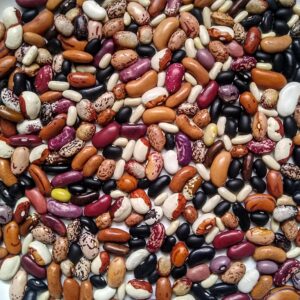
 OSA researchers have been busy in the field the past month with our organic carrot breeding work. We are involved in two major organic carrot breeding projects –the Carrot Improvement for Organic Agriculture (CIOA) project and the Northern Organic Vegetable Improvement Collaborative (NOVIC). While both projects include organic carrots, research and breeding objectives vary between them.
OSA researchers have been busy in the field the past month with our organic carrot breeding work. We are involved in two major organic carrot breeding projects –the Carrot Improvement for Organic Agriculture (CIOA) project and the Northern Organic Vegetable Improvement Collaborative (NOVIC). While both projects include organic carrots, research and breeding objectives vary between them.
CIOA is a long-term breeding project in its first year that addresses the critical needs of organic carrot farmers by developing orange and novel colored carrots with improved disease and nematode resistance, improved weed competitiveness, and improved nutritional value and flavor. Last week, CIOA project researchers looked at thirty-six carrot populations in replicated field trials in central Washington. The trials are under both organic and conventional production.
It was truly educational and a pleasure to evaluate the comparative trials with Plant Breeder Phil Simon, Plant and Seed Pathologist Lindsey Dutoit, and Extension Specialist Tim Waters. Carrots trial varieties include germplasm that Simon has collected in his breeding work around the world for nearly thirty years. We have included several modern commercial varieties and novel colored populations, from deep indigo to light yellow, in this year’s trials.
It was clear as we dug up the Washington State trials that genetics matter in variety performance under both organic and conventional systems. Varieties varied widely in productivity, overall size, top growth, disease incidence, appearance, and flavor. Overall growth and performance between the organic and conventional site also varied. In the organic field top growth was tall and lush.
Overall the field and roots looked very healthy and had few instances of disease. We did find that several varieties had some incidence of Cercospora leaf spot, a foliar disease causing dark spots, perhaps due to the thick canopy growth in the organic field. Varieties in the conventional field did not have this disease, but did have varying levels of powdery mildew and symptoms that appeared to be due to some sort of spray burn. Our goal is to further identify which varieties perform optimally under organic production practices compared to conventional practices and to further identify which genetic traits are attributed to superior health and growth.
Upon returning from the CIOA trials in central Washington, all available OSA hands were in the field planting NOVIC organic carrot progeny. Now in our fourth season, the goal of the NOVIC carrot breeding is to develop an organic fresh market variety with strong, tall tops and good winter holding capacity. The roots we planted last month will be dug and evaluated around January and selected for winter storage qualities.
After weeks in the carrot fields, we sent Micaela’s three-and-a-half year old daughter to school with a selection of carrots — colors spanning from yellow, orange, pink, red, purple, and even those with striped colors between the outer flesh and core. Micaela asked the kids to do a taste test and let us know which was their favorite. Orange was the winner for taste, but they discerned several quality attributes in the other colors, too. Most importantly they learned that the earth offers a wide range of diversity for our eating pleasure, not just the usual suspects found on the grocery shelf.
